Introduction of Preppy Kitchen
The preppy kitchen is more than a passing trend—a thoughtfully curated design choice that blends timeless elements with a touch of personl style. This aesthetic draws inspiration from classic Americana, New England charm, and subtle coastal influences, creating a warm and polished space.
The appeal of a preppy kitchen lies in its simplicity, its attention to detail, and its rooted sense of comfort. Think clean white cabinetry, brass hardware, striped fabrics, monogrammed tea towels, soft lighting, and a few tasteful accessories that bring personality without overpowering the room. Unlike bolder trends that may fade over time, this dsign language holds steady. It’s fresh yet classic, vibrant yet restrained—making it one of the most livable and long-lasting kitchen styles available today.
We’ll explore what makes a kitchen “preppy,” the benefits of embracing this look, how to achieve it affordably and effectively, and which pitfalls to avoid alng the way. Whether you’re renovating your current space or designing a brnd-new one, the preppy kitchen might just be your perfect match.
Let’s begin by understanding exactly what this style is all about.
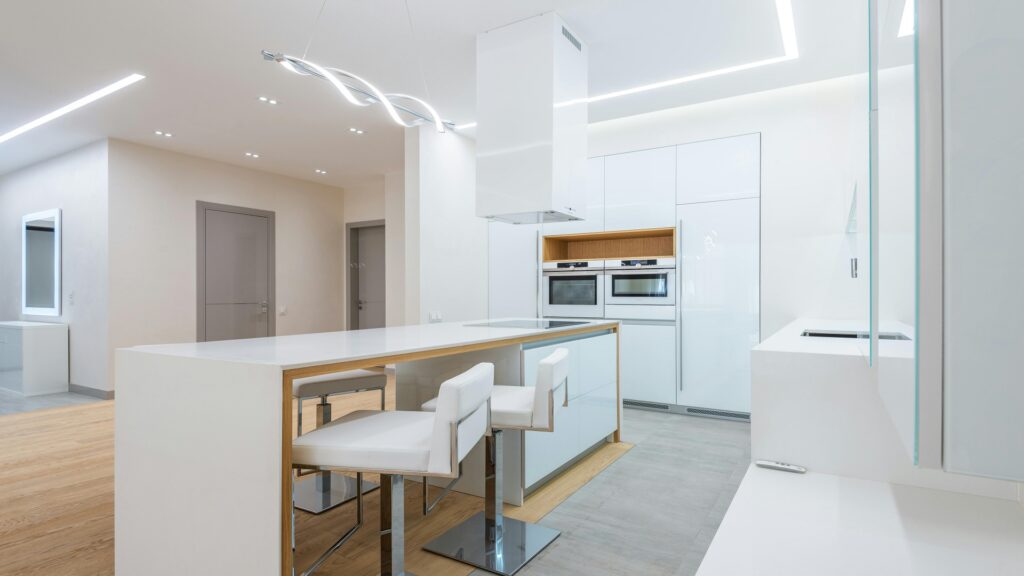
What is a preppy kitchen?
A preppy kitchen is a well-balanced blend of traditional design, polished finishes, and playful personal touches. Rooted in East Coast prep culture and Ivy League aesthetics, this style evokes feelings of hritage, structure, and understated elegance.
Visit This Link: Kitchen Social
Imagine this: white or pastel cabinetry (often shaker-style), brushed brass or nickel fixtures, checkered dish towels, subtle navy accents, and open shelving that displays heirloom china or neatly organized cookbooks. It’s not just about how the space looks—it’s about how it feels. The preppy kitchen is always tidy, light-filled, inviting, and ever so slighty playful. It whispers sophistiction rather than shouts it.
Core Features of a Preppy Kitchen:
- Color Palette: White, ivory, pale blue, mint green, soft pink, navy, beige, or khaki.
- Cabinetry Style: Shaker, inset panel, or beaded inset styles with traditional moldings.
- Hardware & Fixtures: Brass, brushed nickel, or polished chrome—elegant but not flashy.
- Backsplash: Classic subway tiles, beadbord panels, or soft patterned tiles.
- Accessories: Gingham napkins, striped rugs, glass jars, rattan baskets, and even a few nautical or seasonal décor touches.
- Lighting: Pendant lighting in brass or glass, undr-cabinet lights for clean functionality.
This look may also borrow from other aesthetics like coastal, cottagecore, or grandmillennial, but it retains a cleaner and more structured finish than those styles. It is, abve all, tailord—but never cold.
While it can lean into luxury materials like marble countertops or bespoke cabinetry, you don’t have to have a huge budget to achieve this look. Even a rental kitchen can reflect preppy aesthetics with a few key tweaks like swapping out drawer pulls, adding peel-and-stick backsplash tiles, and updating soft décor pieces like dish towels and bar stools.
Benefits of a preppy kitchen
Now that we understand the aesthetic, let’s look at what makes the preppy kitchen so desirable. This isn’t just about appearancs—it’s also about livability, function, and feeling truly at home.
Also, Visit This Link: Roots Natural Kitchen
1. Timelessness Over Trends
Moreover, one of the most appealing aspects of a preppy kitchen is its staying power. Because it leans on classic elements (like white cabinetry or brass hardware), it rarely looks outdted. Unlike trendy finishes (high-gloss acrylics, neon accent walls, etc.), this design continues to look fresh even years dwn the road.
2. Airy, Light-Filled Design
In addition, the color palette used in preppy kitchens—think whites, creams, and soft hues—helps bounce light around the room. This makes even small kitchens feel more open and spacious. Natural light, glass accents, and polished finishes all work togethr to create an inviting glow.
3. High Customizability
Preppy doesn’t mean cookie-cutter. This style encourages subtle personal touches. You might monogram your dish towels, disply a curated set of family china, or use striped Roman shades with meaningful color tones. It’s the perfect blend of structure and self-expression.
4. Seasonal Flexibility
This kitchen style is a dream to decorate seasonally. In spring, you might swap in pastel florals and gingham accents. Come fall, switch to mutd earth tones and plaid textures. The base design stays the same while accessories rotate easily throughout the year.
5. Functional Yet Elegant Layout
The emphasis on thoughtful cabinetry, practical materials (like hardwood or stone), and clear sight lines ensures that your kitchen works just as hard as it oks good. It’s not just a place to show off—it’s a place to cook, connect, and create memories.
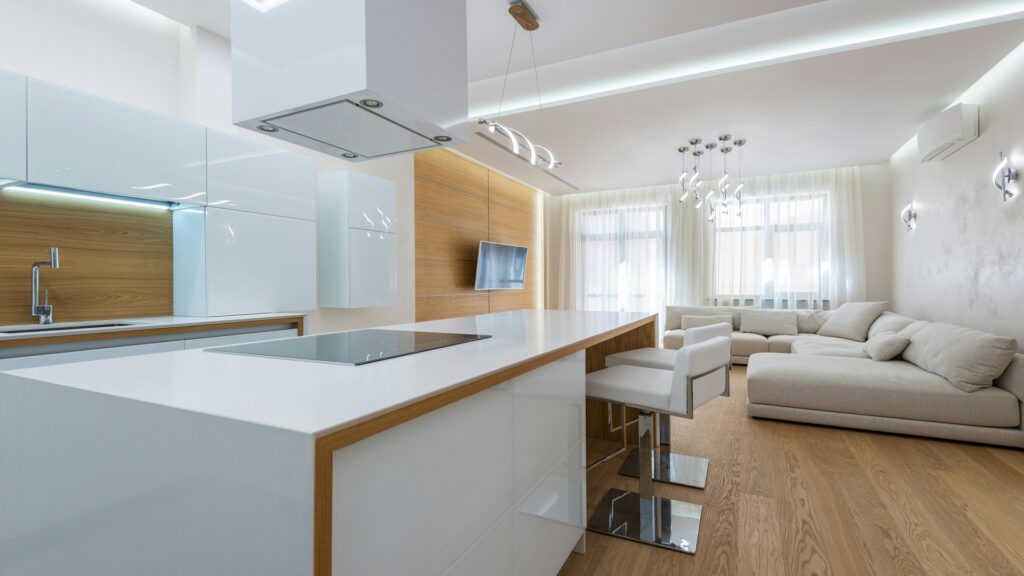
How to Use Preppy Kitchen Effectively
Designing a preppy kitchen isn’t just about picking a few soft colors and calling it a day. It’s about harmonizing structure, charm, and utility so the space feels bth polished and practical. Whether you’r renovating from scratch or doing a light update, the following steps will help you achieve this effortlessly stylish look.
Here’s how to design and style a preppy kitchen effectively, step-by-step:
1. Start With a Classic Base
The foundation of any preppy kitchen lies in its cabintry and countertops. These are often the most expensive components of a remodl, but also the most lasting.
- Choose shaker-style cabinets in white, cream, or pale gray. This type of cabinetry offers the perfect balance between decorative detail and timeless simplicity.
- For countertops, opt fr quartz, marble, or granite with soft veining or neutral tones. Butcher block works well too, especially when paired with brass fixtures.
- If you’re on a budget, consider laminate options in marble-look finishes or even high-quality peel-and-stick counters.
2. Layer in Your Preppy Color Scheme
Once your structure is set, it’s time to work in your palette. The preppy look is all about clean, soft hues with occasional punches of classic contrast.
- Primary Colors: White, ivory, beige, pale pink, baby blue, navy.
- Accent Colors: Kelly green, coral, salmon, or mustard in small amounts.
Pro Tip: Stick to 2–3 dominant colors and 1–2 accents to maintain visual clarity. Avoid clashing tones that distract from the calm, organized vibe of the spce.
3. Use Statement Hardware Thoughtfully
Your cabinet hardware might seem like a small detail, but it’s one of the easiest ways to make a space feel distnctly preppy.
- Opt for brushed brass, matte black, or polished chrome pulls and knobs.
- Cup pulls or elegant round knobs give a tailored, traditional feel.
- Try mixing metals slightly for contrast—but keep it intentionl and balanced.
4. Add Decorative Elements That Feel “Prep”
This is where the magic happens. A preppy kitchen shines in its details: stripes, monograms, natural fibers, and subtle nods to tradition.
- Use striped or gingham curtains or Roman shades on windows.
- Add monogrammed dish towels or pot holders.
- Include baskets or wooden crates for storage to evoke East Coast cottage vibes.
- Place blue-and-white porcelain dishes, rattan barstools, or framed botanical prints as accents.
Remember, less is more. A clutterd kitchn is the opposite of preppy. Keep items curated, organized, and intentional.
5. Make Lighting a Focal Point
Lighting transforms a kitchn instntly. In preppy kitchens, it’s both functional and decorative.
- Use pendant lights in brass or glass above islands or dining spaces.
- Install under-cabinet LED strips for a clean look.
- Consider adding a small table lamp on the counter (yes, really!) for warmth and charm.
6. Don’t Forget the Floors
Flooring can make or break the look. While the focus is usually on cabintry and counters, floors anchor the entire style.
- Choose hardwood, engineered wood, or classic checkerboard tile in soft tones.
- Natural fiber rugs like jute or cotton runners can soften the space.
- Try a nautical-striped rug for a splash of prep school charm.
7. Curate Open Shelves (Carefully!)
Many preppy kitchens incorporate open shlving—but there’s an art to it.
- Display matching dishware or elegant cookware.
- Stack cookbooks with classic covrs (Julia Child or Martha Stewart are preppy staples).
- Avoid overcrowding—leave brething room between each element.
8. Incorporate Seasonal Décor
The preppy aesthetic transitions beautifully through the seasons.
- Spring: Florals, pastels, light linens.
- Summer: Nautical touches, hydrangeas, navy & white.
- Fall: Plaids, pumpkins, golden accents.
- Winter: Evergreen garlands, candles, silver touches.
9. Keep Functionality Front and Center
While it’s tmpting to focus on visual appel, don’t sacrifice utility. Preppy kitchens are used often—and proudly.
- Store items in labeled glass jars or baskets.
- Use drawer dividers, pull-out organizers, and lazy Susans to maximize space.
- Include a coffee station or tea bar for daily routines.
10. Be Consistent With the Rest of the Home
To truly shine, your preppy kitchen should flow naturally into your dining area, mudroom, or living space. Use similar materials, colors, or motifs throughout.
Even small cues—like using the same styl of picture frame or choosing matching throw pillows—can create a seamless sense of design across rooms.
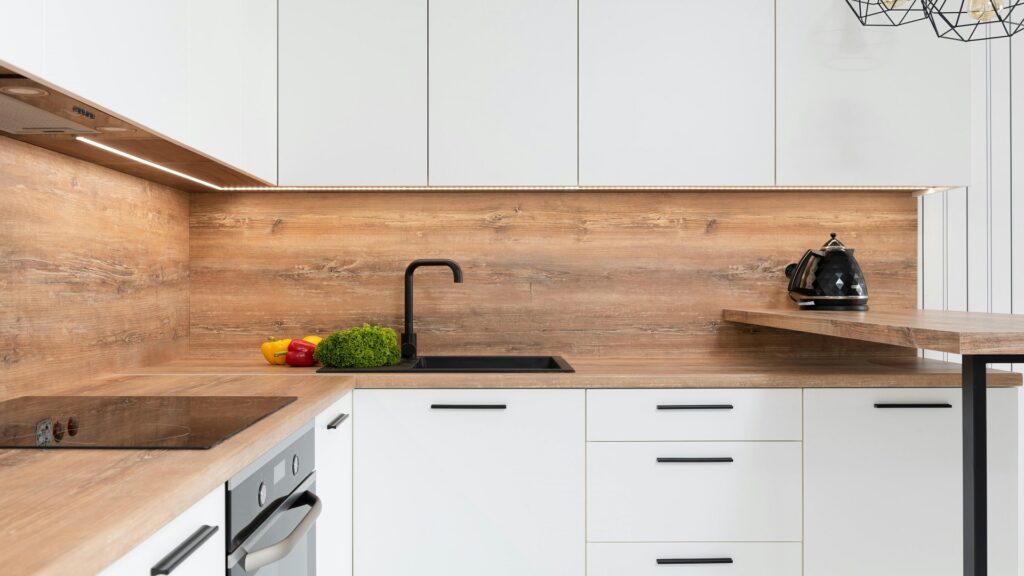
Common Mistakes People Make
Designing a preppy kitchen can be incredibly rewarding, but like any aesthetic, it’s easy to go off course. A style that’s supposd to feel clean, classic, and subtly charming can quickly look chaotic, dated, or disjointed if not approached with the right eye.
Let’s explore the most common mistaks people make when aiming for a preppy kitchen, and how to avoid them.
1. Over-accessorizing
It’s tempting to fill every shelf and counter with cute finds fm home stores or thrift shops, but the preppy kitchen thrives on balance, not busyness.
Avoid:
- Cluttered open shelving
- Too many small, mismatched knick-knacks
- Overuse of patterns (gingham on everything is too much)
Fix:
- Keep shelves 60% full at most
- Choose 1–2 recurring patterns only
- Make sure every item has a purpose or visual cohesion
2. Going Too Nautical
The preppy aesthetic is adjacent to coastal—but they are nt the same. A preppy kitchen can include subtle coastal references, but should never lean into beach-house clichés.
Avoid:
- Shells, anchors, or rope trim overkill
- Coastal sayings on signs (“Life’s a Beach,” etc.)
- Loud blue hues or turquoise overload
Fix:
- Use navy subtly (a stripe, a bowl, a barstool)
- Swap seashells for subtle coral-pattern textiles or art
- Use nautical elements sparingly and with sophistication
3. Skipping the Lighting Plan
Many preppy kitchens fall flat simply due to poor lighting—either too little or too harsh. A good lighting plan is essential for both mood and functionality.
Avoid:
- Relying solely on ceiling lights
- Cold white LED strips
- Dim corners near prep zones
Fix:
- Add under-cabinet task lighting
- Use warm bulbs (2700K–3000K range)
- Incorporate a statement pendant or two above the islands
4. Using the Wrong Color Tones
Color matters, a lot. Many people confuse preppy pastels with overly saccharine, saturated hues that end up loking kitschy rather than tailored.
Avoid:
- Neon pastels or bright baby tones
- Mismatched warm and cool undertones
- Painting every cabinet or wall pink/blue
Fix:
- Stick to one tone family (e.g., cool pastels with cool neutrals)
- Use pastels in accessories rather than fixed elements
- Contrast with grunding neutrals like ivory, taupe, or navy
5. Ignoring Cohesion with the Rest of the Home
A preppy kitchen should not feel like a different world from the rest of the house. Even if your kitchen is the stndout space, it should still feel cohesive with adjoining rooms.
Avoid:
- Sudden style shifts between rooms (e.g., farmhouse dining + preppy kitchen)
- Abrupt changes in flooring or trim styles
- Wildly different color palettes
Fix:
- Carry color accents into nearby spacs (navy napkins in the kitchen + navy throw pillows in the living room)
- Maintain consistent hardware or finishes across doors, trims, and cabinetry
- Use complementary art and accessories to bridge rooms
6. Forgetting the Functionality
At its core, the preppy kitchen is a wrking kitchen. No matter how stylish it is, it must be functional, organizd, and livable.
Avoid:
- Open shelving without a system
- Decorative items blcking prep zones
- Poorly planned storage
Fix:
- Use baskets, jars, and bins that match the aesthetic and support organization
- Leave key counter areas clear
- Focus on ergonomic, intuitive kitchen flow
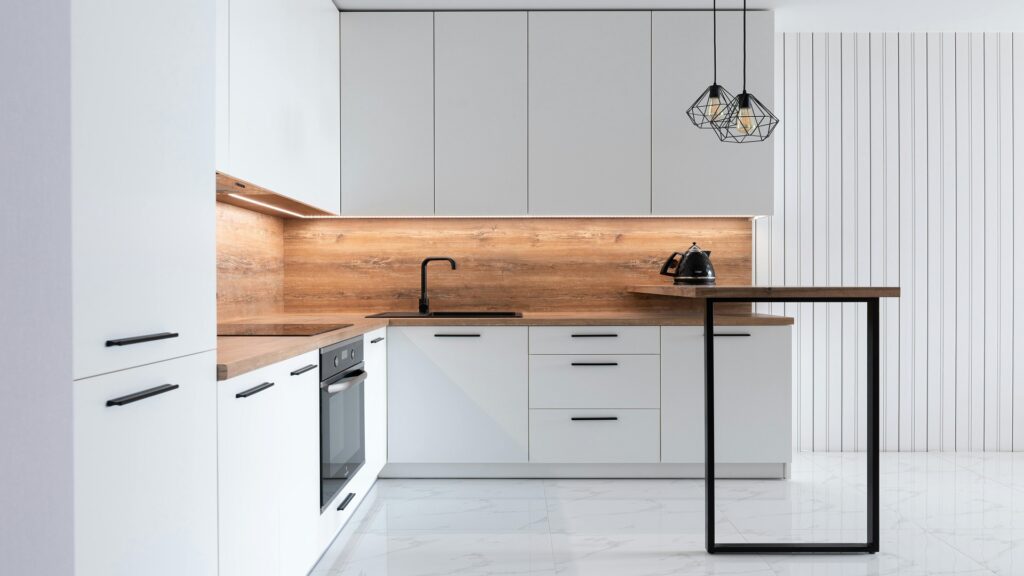
FAQs About Preppy Kitchen
What colors define a preppy kitchen?
A preppy kitchen typically features a light, soft, and cheerful color palette with timeless appeal. The base colrs are usually white, ivory, light gray, or beige, creating an open and airy atmosphere. Accent colors often include pastel pinks, baby blues, mint greens, and navy.
These colors work well together and allow for seasonal shifts in accessories. For example, spring might bring soft yellow tea towels, while atumn could bring in muted plaid napkins or forest green pottery.
Can you design a preppy kitchen on a budget?
Yes, absolutely. A preppy kitchen can be created affordably with a few strategic updates rather than a full remodel. Focus on key visual elements: cabinet hardware, lighting, open shelving, and textiles like curtains or dish towels.
Swapping out drawer pulls, painting cabinets in soft neutrals, and adding preppy accents—like gingham towels or striped rugs—can completely transform a basic kitchen. You don’t need high-end materials to achieve the look. There are plenty of budget-friendly alternatives that still offer preppy charm, such as laminate countertops with a marble look or peel-and-stick backsplashes.
Is a preppy kitchen only for large or open-concept spaces?
A preppy kitchen works beautifully in both small and large layouts. The emphasis on bright, light-reflecting surfaces and neat organization makes it ideal for compact kitchens. You can maximize natural light wth white or light-colored cabinets, and create depth using mirrors or glass elements.
Smart use of open shelving, under-cabinet lighting, and thoughtful storage also helps smaller spaces feel less cluttered and more open. The key is keeping things streamlined and intentional, which is central to the preppy aesthetic regardless of square footage.
What kind of materials work best in a preppy kitchen?
The best materials for a preppy kitchen are classic, durable, and elegant. Think: marble or quartz countertops, wood or beadboard cabinetry, and subway or mosaic tiles for backsplashes. Flooring options include hardwood, engineered wood, or checkered tile in soft neutral tones.
Even if you’re using affordable alternatives, it’s important to stick to finishes that feel crisp and timeless. Avoid overly industrial or ultra-modern materials like high-gloss acrylics or concrete—those tend to clash with the soft, preppy look.
Can I mix preppy style with other design themes?
Yes, but it should be done with subtlety and cohesion. The preppy kitchen blends especially well with coastal, traditional, and cottage styles, de to their shared love of comfort, elegance, and timelessness. Mixing it with ultra-modern or rustic farmhouse styles can cause dissonance unless you carefully manage the balance.
For example, a coastal-preppy hybrid might use navy-striped curtains and driftwood barstools. A grandmillennial-preppy crossover could feature floral wallpaper and blue-and-white porcelain. Always look for a common thred in color, texture, or silhouette to ensure your style mashup feels curated rather than clashing.
Is the preppy kitchen style high-maintenance?
Not at all. One of the biggest misconceptions is that a beautiful, polished space must be hard to maintain. The truth is, preppy kitchens thrive on tidiness and simplicity, which makes upkeep easier. With fewer items on disply, cleaner lines, and streamlined storage, it’s easier to keep surfaces wiped and clutter-free.
Additionally, many of the materials used—such as quartz countertops or ceramic backsplashes—are bth beautiful and practical. As long as you’re thoughtful in your design choices, a preppy kitchen can be bth elegant and low-maintenance.
How can I personalize my preppy kitchen without losing the classic feel?
Personalization is wht makes a preppy kitchen truly yours, and it can be done tastefully with monograms, art, family heirlooms, or custom textiles. Monogrammed hand towels, personalized storage jars, or framed botanical prints add personality while staying within the clssic structre of the space.
You can also incorporate items that tell your story—perhaps a tea set passed down from family, or artwork from a local artisan. The goal is to add warmth and personality without disrupting the calm, organized flow of the kitchen.
Author Remarks
The preppy kitchen is far more than a pssing design trend — it’s a style rooted in timeless charm, balance, and thoughtful elegance. With its crisp color palette, structured lines, layered textures, and playful accents, it offrs the perfect blend of tradition and personality.
How to build a preppy kitchen from the ground up — from choosing classic cabinetry and curated color schems to avoiding common styling mistakes. We’ve covered how to use this aesthetic effectively, what matrials to choose, and how to blend form with function. We also addressed c ommon questions and provided solutions for designing this space on both high-end and budget-conscious levels.
We’ve shown that anyone can embrce the preppy kitchen — whether you’re renovating your forever home, refrshing a rental, or bilding from scratch. This look is versatile, affordable, and adaptable across all sizes and layouts.
The preppy kitchen isn’t just a space you cook in — it’s a space you live in. It reflects your values of hospitality, organization, creativity, and charm.

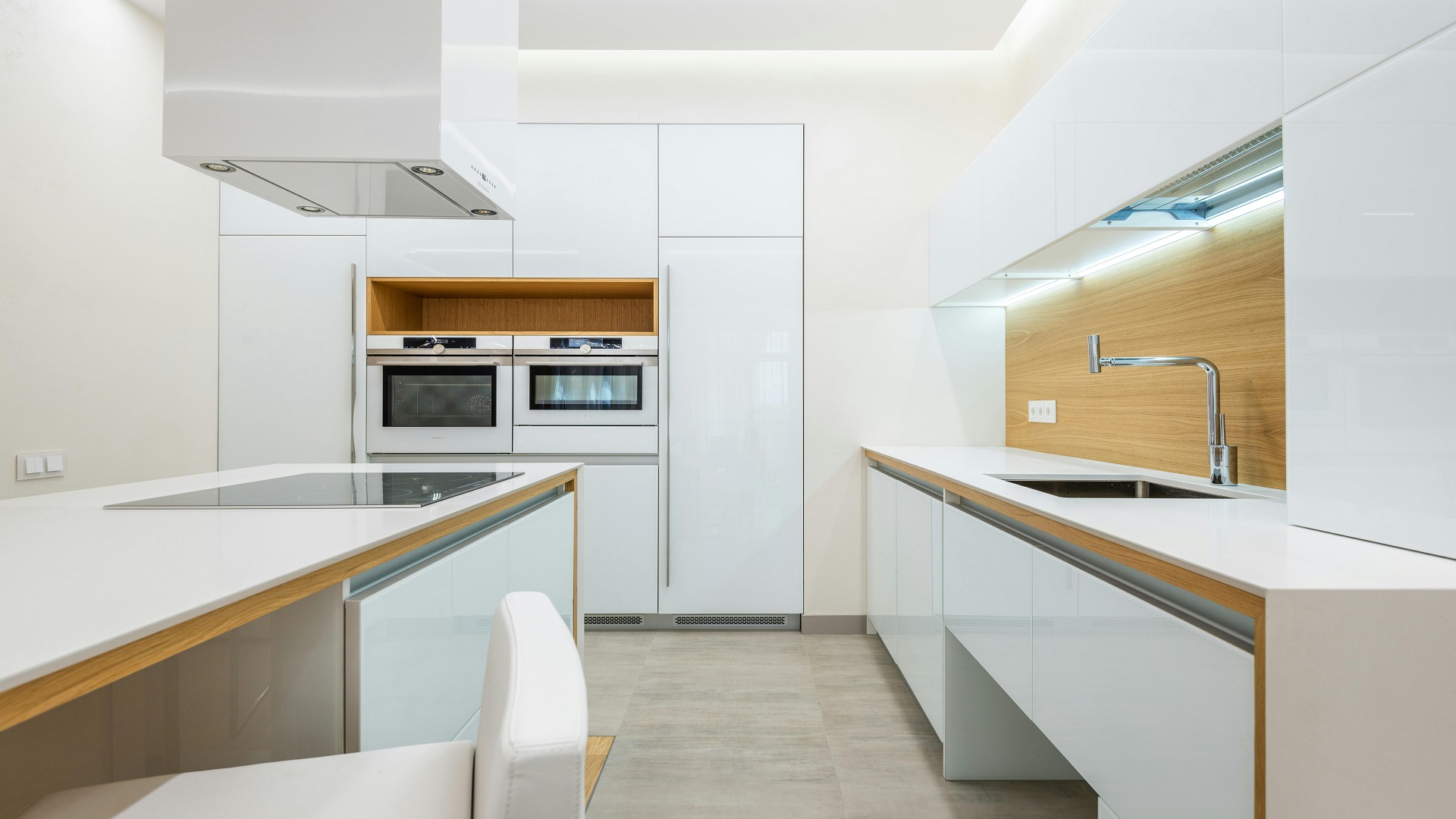
Leave a Comment